Summary
Netherlands, situated on the North Sea, lies across from Great Britain on the European continent. Netherlands is a constitutional monarchy and parliamentary democracy with unitary structure.
Netherlands declared independence from the control of Spain in the 16th century. It quickly became a continental European power having a dominant position in trade and control of foreign colonies.

Netherlands, CIA World Factbook
The country was neutral in both World Wars, but was occupied by Nazi Germany from 1940-44. During that time, more than two-thirds of its Jewish population was killed. After liberation, Netherlands returned to democratic governance, with a pluralist multiparty system and model welfare state.
Predominantly Nederland, or Dutch, by ethnicity (75 percent), the population is religiously mixed. In recent decades, the minority population grew to 25 percent, with immigrants coming from European, Arab, African and former colonized countries.
The largest religious affiliations are Catholic (20 percent), Protestant (15 percent), and Islam (6 percent), while 55 percent adhere to no religion. Historically, Netherlands adopted a policy of “multiculturalism” to promote coexistence of Catholic and Protestant “pillar” communities. Applied to the Muslim immigrant community, however, the policy tended to foster separation. The rise of anti-immigrant political parties has challenged the country’s tradition of tolerance and socially liberal policies.
Netherlands is a small country (131st out of 195 countries in area and 69th in population at 17 million people). Yet, it is among the world's most dynamic economies according to International Monetary Fund (IMF) measurements, ranked 19th in the world in nominal GDP ($991 billion total output) and 13th in nominal Gross National Income ($56,298 per capita).
History
From Early History to Independence
Distinct human cultures emerged in Netherlands around 13,000 BCE. Hunter-gather communities intermixed with those adopting animal husbandry into the late BCE period, when Celtic and Germanic tribes migrated to the territory. The area was conquered by the Romans in the 1st century BCE and in the Middle Ages by the Franks, under Clovis I and then the Carolinian empire.
Within the framework of the Holy Roman Empire, the Austrian Hapsburgs and then the Spanish monarchy exerted authority over the Low Countries (what are today Belgium, Luxembourg and Netherlands). In 1568, the seven northern Low provinces (Netherlands) declared independence from Spain’s Charles V over issues of religion, taxation and privileges of the nobility. This sparked the Eighty Years War, also known as the Dutch Revolt.
The Seven Republics of the Netherlands operated as a republican confederation but with several states governed by a constitutional monarchy under the Protestant House of Orange
Netherlands gained effective independence under the Union of Utrecht in 1579. Spain formally recognized its independence in 1648 under terms of the Treaty of Westphalia. The latter treaty ended the Thirty Years War and the religious conflicts between Catholic and Protestant states.
The Seven Republics of the Netherlands operated as a republican confederation but with several states governed by a constitutional monarchy under the Protestant House of Orange (the longest-lasting constitutional ruling family in Europe). In 1677, William III, the sovereign prince of Orange, married his first cousin Mary, the daughter of the future king of England, James II. On the throne, James II’s adherence to Catholicism and other actions were believed to threaten the state Church of England, prompting the British Parliament to invite William to invade. He defeated James II’s army as part of The Glorious Revolution. William and Mary briefly united the British and Dutch thrones.
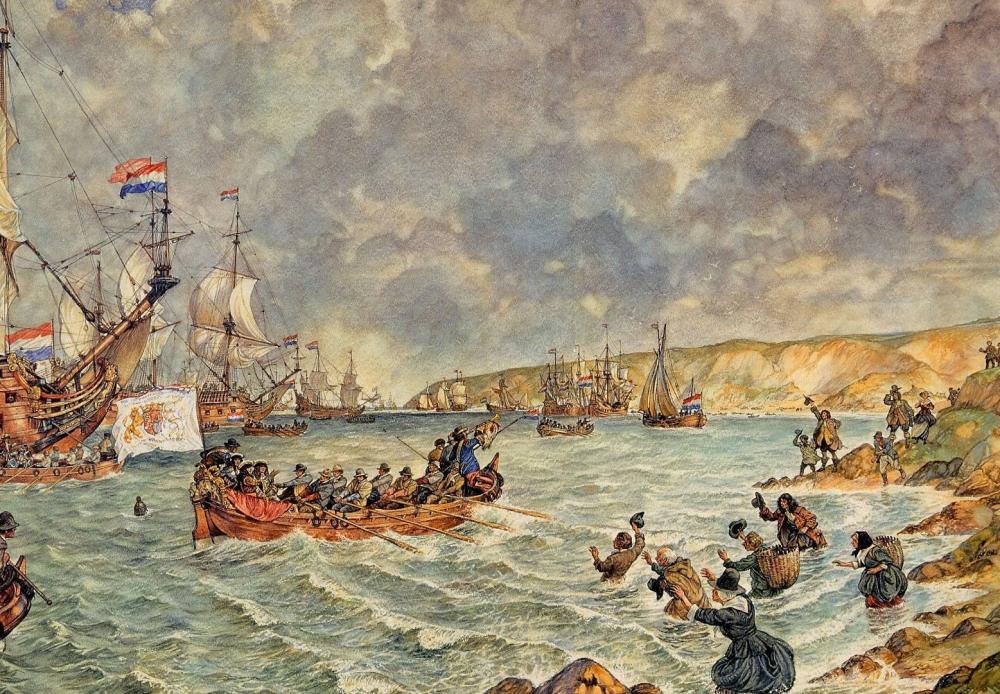
William of the House of Orange, the longest ruling family in Europe, at the Battle of Boyne in 1690. He defeated James II after being invited with Mary, his wife and James II’s daughter, to assume the throne of Great Britain in 1688.
The Dutch Golden Age
The period from 1584 to 1702 is known as the Golden Age in Netherlands history. It is an era of expanded trade, economic development, colonial expansion, international influence, and significant contributions to Europe’s intellectual Enlightenment and culture.
The period from 1584 to 1702 is known as the Golden Age in Netherlands history. It is an era of expanded trade, economic development, colonial expansion, international influence, and significant contributions to Europe’s intellectual Enlightenment and culture. With its major cities on the North Sea (Amsterdam, Rotterdam and the Hague), Netherlands became one of the great seafaring nations of the world and established trading posts and colonies in strategic places, including South Africa, Brazil, Indonesia, Suriname and several Caribbean islands. Before trading it to Britain, the Netherlands empire included New Amsterdam (later renamed New York). Aside from New Amsterdam, which thrived as an independent entity, Netherlands treated its colonies in much the same way as Great Britain, exploiting resources and imposing slavery or other forced labor practices.
Netherlands was highly innovative in the development of technology, especially forms of seafaring and ways of protecting its below-sea-level cities through waterways. Netherlands also innovated in areas of economic commerce. It is known as the first capitalist country, having introduced public stock companies, share trading, a stock exchange and insurance. It also introduced use of the windmill for energy. These innovations continue to be part of the foundation for the Netherlands economy.
Establishment of Parliamentary Democracy
Since 1848, after a popular revolution, the Netherlands has had a constitutional monarchy with a parliamentary democracy that has functioned continuously ever since, except for the Nazi occupation of 1940-44.
In 1795, Napoleon's army defeated Netherlands to incorporate it into an emerging empire. With Napoleon’s final military defeat in 1815, independence was restored through the Kingdom of Netherlands in a union with Belgium and Luxembourg (the southern Low countries). In 1830, Belgium declared its own independence and in 1839 and Luxembourg followed suit, leaving the Kingdom with its original seven regions.
Since 1848, after a popular revolution, the Netherlands has had a constitutional monarchy with a parliamentary democracy that has functioned continuously ever since, except for the Nazi occupation of 1940-44. The legislature, or States General (which first met in the 15th century) has had a popularly elected House of Representatives together with a Senate, which is elected indirectly by the seven States Provincial. The franchise depended on limited property or wealth qualifications until 1917, when universal male suffrage was established. Women gained the full right to vote soon after, in 1919, one year before the United States.
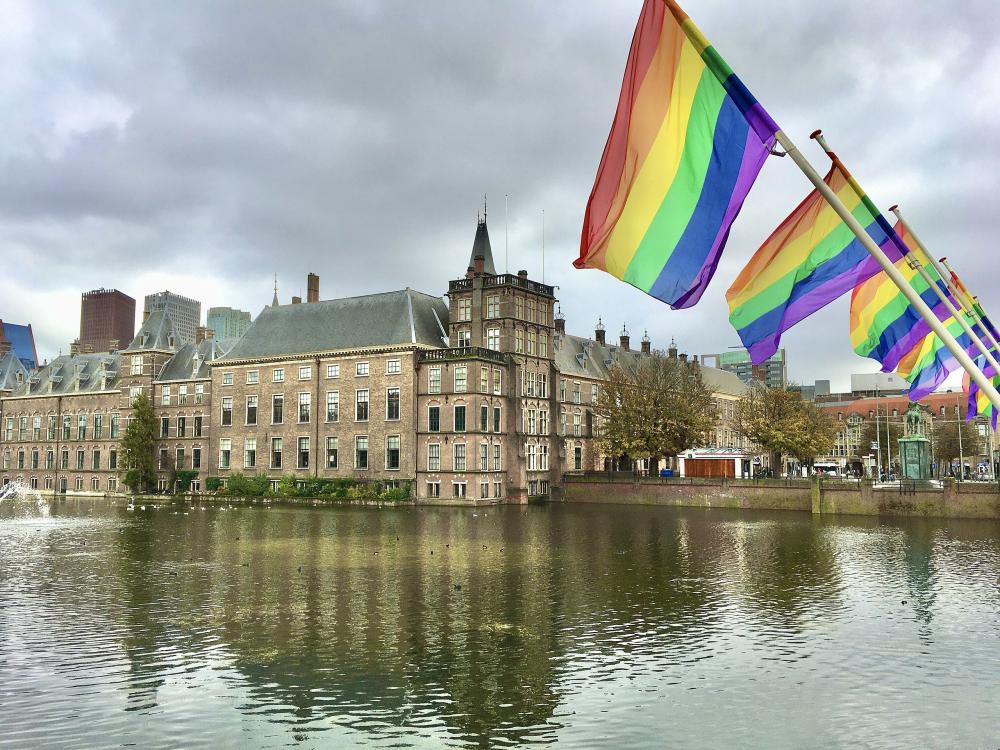
The Binnenhof complex of buildings, originally built in the 13th century, has housed the Estates General since 1584. Shown here in 2020 on “coming out day.”
Neutrality and Occupation
The country's sizable Jewish population was rounded up and transported to extermination camps. Despite efforts of non-Jews to hide them . . . 100,000 Dutch Jews perished, or 70 percent of the prewar Jewish population.
Netherlands remained neutral in both world wars, but Nazi Germany ignored its neutrality and occupied the country in 1940 as the Wehrmacht swept across Western Europe. A Dutch government was formed in exile in London and urged resistance, but this was limited. Under an oppressive Nazi administration, Dutch workers were put to forced labor. The country's sizable Jewish population was rounded up and transported to extermination camps. Despite efforts of non-Jews to hide them ─ Netherlands has the second highest number of any country of “righteous Gentiles” honored by Israel ─ 100,000 Dutch Jews perished, or 70 percent of the prewar Jewish population. Netherlands was liberated in 1944-45.
Postwar Expansion & Contraction
Like much of Western and Northern Europe, Netherlands reconstituted its democratic government after the war. After initial hardship, the country saw both dynamic free-market growth and the development of broad social democratic policies providing guarantees of social welfare. Netherlands has emerged as one the world’s largest economies and a model welfare state.
After initial hardship, the country saw both dynamic free-market growth and the development of broad social democratic policies providing guarantees of social welfare.
Post-war governments granted independence to former colonies such as Indonesia and Western New Guinea in 1949 (the latter became part of Indonesia in 1962). A composite kingdom was created in 1954 made up of remaining territories in the Caribbean. Suriname established its independence in 1975, while others retained country status (Aruba, Curaçao, and Sint Maarten) or municipal status (Bonaire, Sint Eustatius and Saba) within the Kingdom. Since 2009, residents of these islands, have the right to vote in both Dutch and European Parliament elections.
After World War II, political parties rejected neutrality in foreign policy. Netherlands joined the North Atlantic Treaty Organization (NATO) as an original member in April 1949. In 1952, it helped form the European Coal and Steel Community, the forerunner of today's European Union. Netherlands has sought to stand out as a country with strong concerns for human rights and humanitarian issues internationally. It provides a fixed part of its GDP for foreign assistance (0.59 percent, or around $5 billion in 2020).
Majority Rule, Minority Rights
While still a constitutional monarchy, the king has only a formal role. The Constitution of the Netherlands establishes a parliamentary democracy, with a bicameral legislature. The Constitution has full protections for individual freedoms, minority rights and the rule of law, all of which are affirmed through membership in the Council of Europe and adherence to the European Convention on Human Rights.
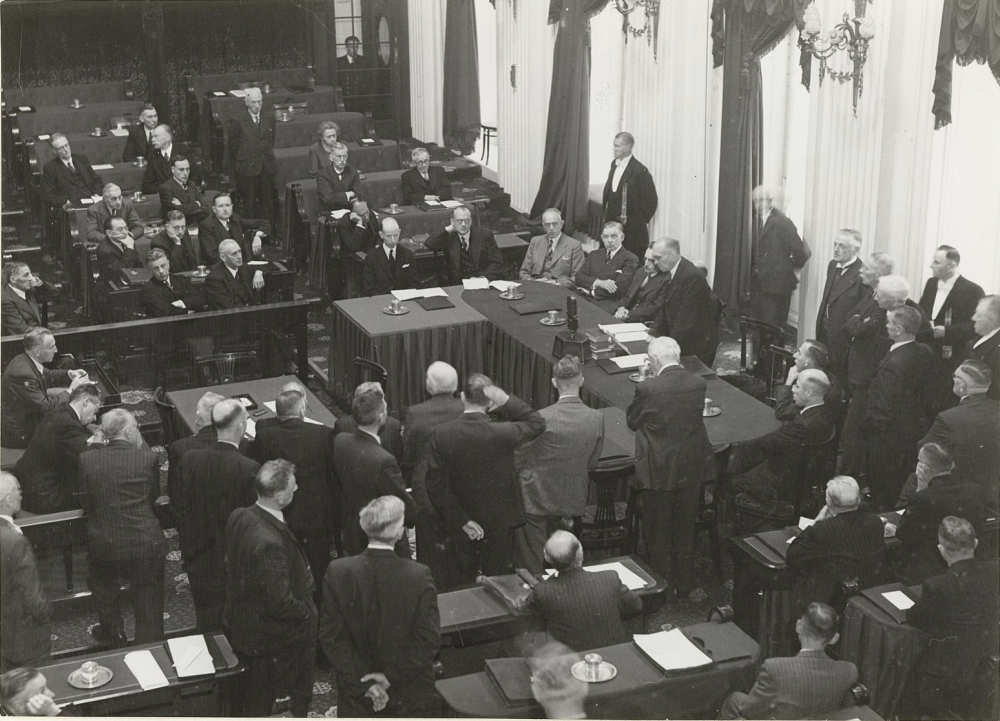
A meeting of the Tweede Kamer (second chamber), or House of Representatives, soon after liberation from Nazi occupation in October 1945.
After amendments to the Constitution in 1956, the bicameral parliament (Estates-General) consists of a 75-member First Chamber (Eerste Kamer), or Senate, and a 150-member Second Chamber (Tweede Kamer), or House of Representatives. The Second Chamber is directly elected at least every four years by strict proportional representation, according to party lists. There is a low threshold for entering parliament (0.67 percent), with presently 17 parties represented. As the popularly elected body, the Second Chamber has powers to form the government, review cabinet decisions and policy, and initiate and amend legislation. Members to the First Chamber, or Senate, are elected to four-year terms by provincial parliaments (Estates Provincial) and are selected following provincial elections. It has powers of review and its approval is necessary for legislation to be enacted.
Political Majorities and Minorities
Political parties represented in parliament are highly diverse, including conservative and liberal, rural and urban, religious-based and secular, pro-business and pro-labor, anti-immigrant and pro-immigrant, socialist and social democratic, and environmental.
Political parties represented in parliament are highly diverse, including conservative and liberal, rural and urban, religious-based and secular, pro-business and pro-labor, anti-immigrant and pro-immigrant, socialist and social democratic, and environmental. Dutch politics generally has had two leading parties, one right and one left, but no party has won a majority of the vote or seats in post-war elections.
With its low threshold for entering parliament, there have been from eight to seventeen parties represented, with no political domination by any one party or majority bloc. In the last two elections, the number of parties has expanded by six (to seventeen), with a number of new parties emerging. This has meant a more splintered political landscape in which to form coalitions.
The Post-War Period to Present
In the post-World War II period, there were two leading parties, the Christian Democratic Appeal (CDA) on the center-right and the Labor Party (PvdA) on the center-left. Rural, religious-based, liberal and socialist parties also gained representation. In the decades since World War II, Netherlands saw a series of left-led or right-led coalition governments, as well as five unity governments composed primarily of the main left and right parties.
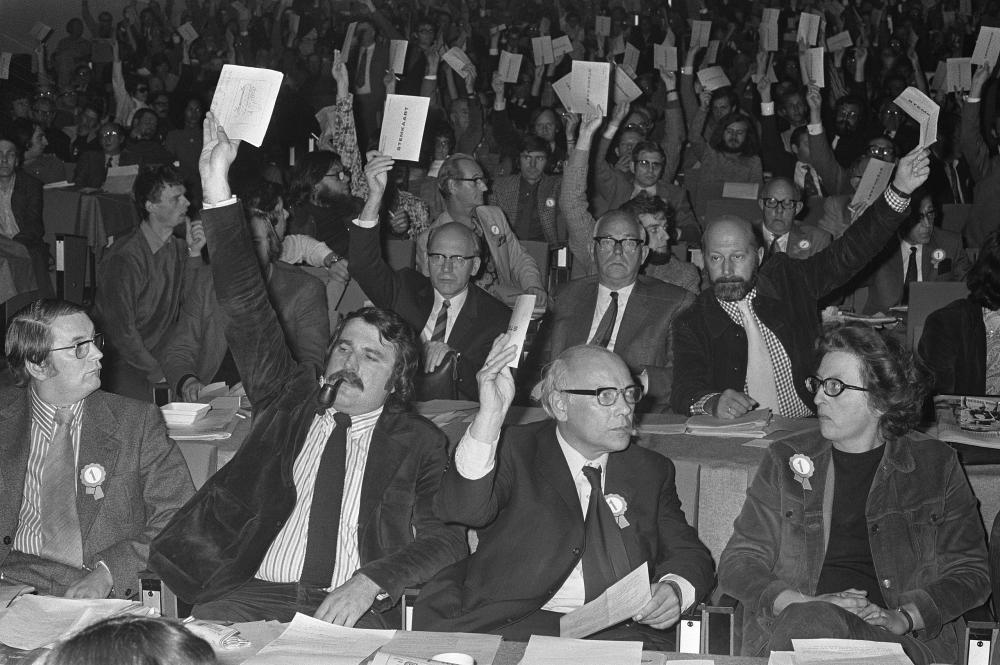
A vote during the 1972 Congress of the Netherlands Labour Party (PvdA), which was a dominant party in the post-World War II period.
In 2002, an anti-immigrant politician rose to prominence with a self-named party, the Pim Fortuyn List (LPF). He challenged Netherlands’s open immigration and multiculturalist policies (see below) and attacked Islam as a homophobic and “barbaric” religion. Prior to the election, Fortuyn was killed by an animal rights activist. Based in part on a sympathy vote, the LPF won second place in the voting ─ unprecedented for a new party. The Christian Democratic Alliance (CDA) included the LPF in a four-party right-wing government, but it fell after five months (the shortest-lived in post-war history). In 2003 elections, the LPM lost most of its seats and the CDA formed a right-coalition government without LPF. Still, the LPF’s initial success presaged the rise of anti-immigrant parties (see below).
In the 2010 and 2012 elections, the People’s Party for Freedom and Democracy (VVD), which combines a pro-free market and socially liberal platform, supplanted the more conservative CDA as the major right-wing party. Until 2017, the Labor Party remained the second largest, slightly behind VVD in both elections. It now comes in fifth (see also below).
The "Pillars" and Failures of Multiculturalism
The Dutch reputation for multiculturalism and tolerance originates from the country's history of "pillar" communities, which were adopted as a legacy of the Wars of Religion. Separate state-supported “pillars” allowed Catholic, Protestant and secular communities to live in one society without conflict.
The Dutch reputation for multiculturalism and tolerance originates from the country's history of "pillar" communities, which were adopted as a legacy of the Wars of Religion. Separate state-supported “pillars” allowed Catholic, Protestant and secular communities to live in one society without conflict.
In practical terms, this approach meant state subsidies for Protestant, Catholic and social democratic institutions, including for clerics, unions, newspapers, broadcast stations, universities and schools and other social or religious-based institutions. The aim was to ensure that no religious or secular group would be excluded from public life. Immigration policy followed this history and “pillarization” extended to the Muslim community.
While the original pillars had resulted in the broad intermixing of religious and secular communities (and ultimately a largely secular society), the policy had the opposite effect for Muslim communities. The Social and Cultural Planning Office of Netherlands published a report in 2004 that found that the policy had encouraged greater insularity and resulted in alienation from majority Dutch culture and politics (see link in Resources). The Report recommended job, education, and social policies aimed at assimilation and integration of immigrants and foreign communities.

Abraham Kuyper, a religious and political leader, who developed the idea of pillarization.
The Report analyzed the rise of Pim Fortuyn and his political party as being rooted in widely held perceptions that immigrants took jobs from native-born Dutch citizens and that “multiculturalism” encouraged religious separatism and extremism. As noted, although the Pim Fortuyn List did not survive its leader’s death, it led to the rise of other anti-immigrant parties.
A Second Political Murder
In November 2004, the Dutch public was shocked by another brutal public murder. A Moroccan immigrant who had joined an Islamist terrorist network assassinated Theo van Gogh because of a film he directed depicting the mistreatment of women in Islamic fundamentalist communities.
Anti-immigrant sentiment rose. The Christian Democrat-led government adopted a plan to expel 26,000 jobless migrants and reduce public spending for minority and immigrant communities. While the plan enjoyed popular support, one party (Democrats ’66) withdrew from the coalition to force new elections.
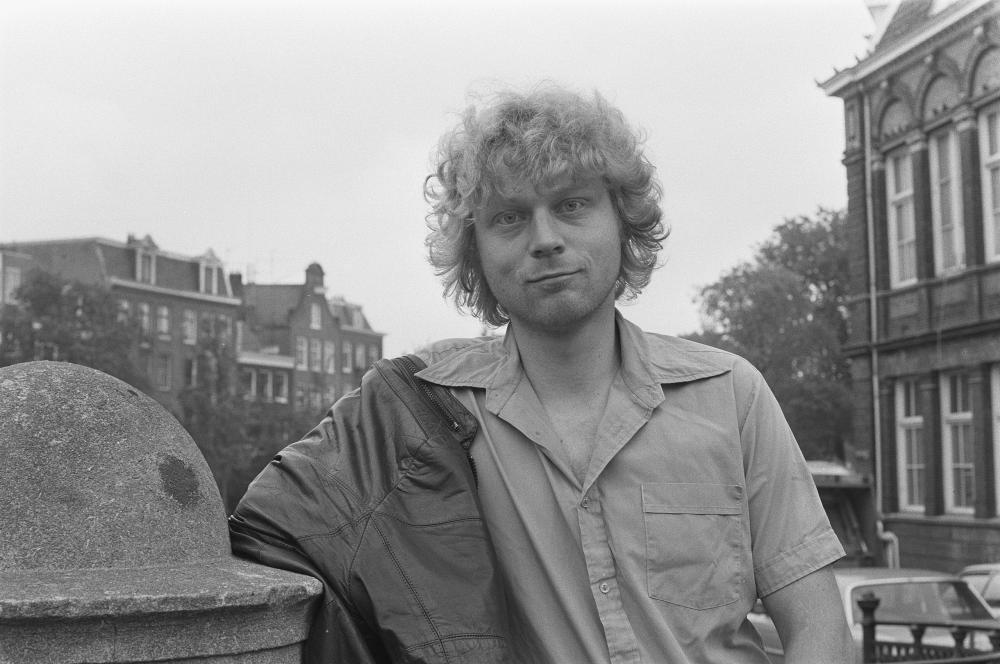
The film director Theo van Gogh, whose film Succession depicted harsh treatment of women under Islamist rule, was murdered in November 2004 by a religious extremist. Creative Commons License. Photo by Sjakkelien Vollebregt.
The 2006 elections splintered, with neither right nor left able to form a coalition. This resulted in a unity government of the Christian Democratic Appeal (CDA) and the Labor Party (PvdA). They adopted a platform called “Living Together, Working Together” that focused on the recommendations of the Social and Economic Planning Office: jobs, education and a new assimilation policy for immigrants (see above). The government lasted nearly a full term (the PvdA withdrew in protest of the country’s participation in NATO’s military operations in Afghanistan).
Changing Alignments
The resulting 2010 election had surprising and lasting results. The center-right People’s Party for Freedom and Democracy (VVD), also known as Liberals, emerged as the top vote-getter over the Labor Party (PvdA) in a tight election. (The VVD earned 31 seats to PvdA’s 30 in the 150-member House of Representatives.) Support for the previously dominant right-wing party, CDA, fell dramatically. It placed fourth behind a new anti-immigrant Party of Freedom (PVV).
A center-right minority coalition government emerged, led by the Liberals’ Mark Rutte and joined by CDA and Democrats 66, a smaller social liberal party. But the government also relied on support of members of the PVV for a parliamentary majority and adopted a more anti-immigration stance as a result. In 2012, Rutte proposed a law similar to that adopted in France (see Country Study) to ban Islamic full-face and body coverings (the niqab and burqa). The proposed law, supported by the PVV’s leader, Geert Wilders, prompted the Democrats ’66 to withdrew from the cabinet, again forcing new elections.
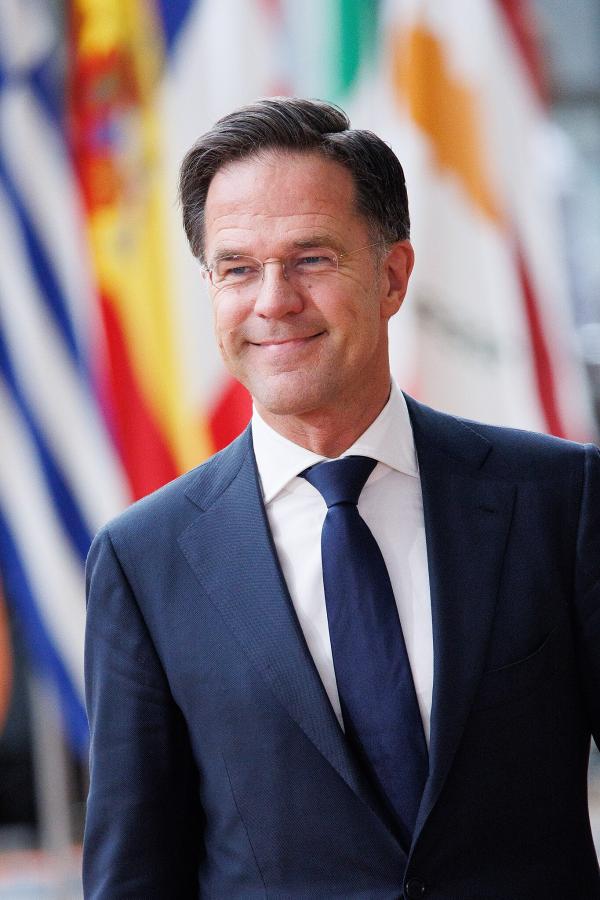
Mark Rutte, shown at the European Commission in March 2023, was prime minister of Netherlands from 2010 to 2024 and leader of the Party for Freedom and Democracy. Photo by Christophe Licoppe.
Rutte’s VVD retained its position as the top party (gaining 42 seats). The Labor Party (PvdA) came in a strong second (38 seats). The left-wing Socialist Party and far-right PVV both lost support from 2010, while the Christian Democratic Appeal continued its decline. Both main parties refused participation by the far-right PVV, forcing again a unity government of the VVD, CDA and PvdA.
The five elections in Netherlands from 2002 to 2012 maintained the country’s pluralism in political life, with general protections of the rights of the majority and the minority. But the PVV’s significant support led the main parties to adopt less tolerant immigration policies in response to rising anti-minority sentiment. The new unity government included the VVD-CDA priorities to ban income assistance for immigrants who could not speak Dutch; the PvdA won agreement for greater funding for assimilation policies and education. The unity government lasted the full term from 2012 to 2016.
Netherlands was less welcoming in response to the migration crisis of 2015-16, when an estimated 2 million people sought asylum in Europe, mostly from war-torn Syria and Afghanistan. Nearly all Dutch parties, including the PvdA, called for restricting immigration. The country accepted just 50,000 migrants (in comparison to 1 million accepted by Germany).
Current Issues
Netherlands’s two recent elections in 2017 and 2021 further altered the country’s political landscape, establishing a political majority of right-wing and center-right parties that have adopted less tolerant policies towards immigrants and immigration.
Netherlands’s two recent elections in 2017 and 2021 further altered the country’s political landscape, establishing a political majority of right-wing and center-right parties that have adopted less tolerant policies towards immigrants and immigration.
In 2017, the Liberals retained the top position with 21.3 percent of the vote. The Labor Party, however, saw a dramatic drop to 5.7 percent. The anti-immigrant Freedom Party (PVV), still running on a platform of “de-Islamization,” again got 13 percent but now was the second strongest party. The previously dominant Christian Democratic Alliance (CDA), now adopting a hardline anti-immigrant policy, was one point behind. After that, the electorate splintered, putting a record 13 parties in parliament. They included a new pro-immigrant party DENK (“think”) with 3 seats. Several parties adopted a “Rainbow Alliance” pledge for LGBTQ rights.
With such fracturing, it took a record 255 days to negotiate a one-seat center-right majority government. The Liberals and CDA were joined by the social liberal D66 and another centrist party, the Christian Union. The government coalition adopted less tolerant legislation and policies towards immigrants. Asylum was further restricted and asylum seekers were kept in poorly-kept detention facilities for months. (Kingdom territories in the Caribbean were even less welcoming, rejecting thousands of Venezuelan asylum seekers.)
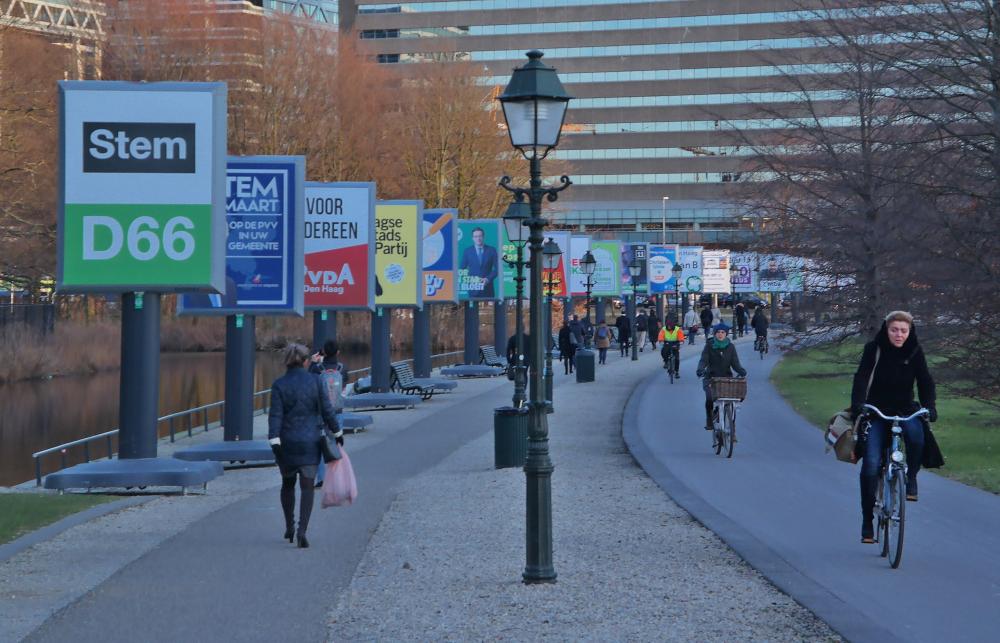
Recent elections have brought about changing alignments in Dutch politics. Proportional systems allocate seats in parliament and municipal councils according to a party’s percentage of the vote. Above, election posters for 2018 Municipal Elections. Creative Commons License. Photo by Steven Lek.
Parliament approved a new Intelligence and Security Act, which allows broad surveillance powers for security agencies, and the proposal to ban religious face coverings on public transport and in public spaces like schools and government buildings. In contrast, the government adopted a "Kinderpardon” in 2019 that allowed nearly one-thousand stateless children previously denied asylum to re-apply to obtain residence.
Just two months before its full term in January 2021, the government was forced to resign due to a major scandal involving a discriminatory practice by the Tax and Customs Administration dating to 2002.
Just two months before its full term in January 2021, the government was forced to resign due to a major scandal involving a discriminatory practice by the Tax and Customs Administration dating to 2002. An oversight agency found that the Tax and Customs Administration made illegal use of applicants’ personal data to deny childcare allowances to thousands of dual-national citizens. A special parliament committee found that between 9,000 and 26,000 families were entitled to compensation.
The elections in March 2021 returned a similar result as 2017 for the VVD (21 percent). Surprisingly, the pro-immigrant Democrats ’66 emerged as the second largest party (16 percent). The PVV retained its 13 percent, while a new anti-EU and nationalist party, the Forum for Democracy (FvD), won 5 percent. (The FvD’s leader is known for racist and white supremacist statements.) There continued to be reduced support for the three main left-wing parties (Labor, Socialist and Greens), while the elections splintered the political landscape further, adding four new parties, making a total of 17.
After a new record of 274 days to form a coalition, a fourth government led by VVD leader Mark Rutte was established with a slim 78-seat majority. It lasted only eighteen months. In July 2023, D66 and the Christian Union resigned over Prime Minister Rutte’s insistence on a proposed policy to delay family reunification for two years for immigrants granted permanent asylum. The elections, to be held in the fall, appear again to alter Netherlands politics. While the VVD will run on “harder” immigration policies (reducing the number of refugees below its current low of 21,000), a new party, the Farmer-Citizen Movement, is set to do well by running on a platform having nothing to do with immigration. It proposes to scrap nitrogen limits on farming, a policy implemented by the Liberals’ government to help protect nature reserves.
The 2020 killing of George Floyd resulted in large anti-racism protests in Netherlands and prompted a partial reckoning with the country’s racist past and practices.
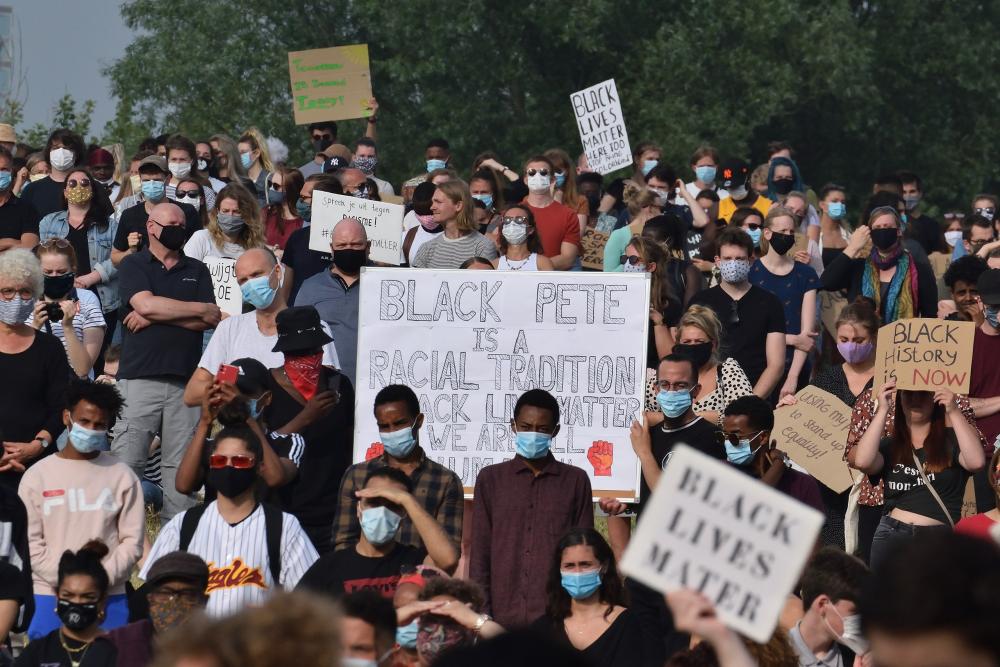
A number of Dutch municipalities responded to protests to ban Black Pete, a traditional figure in Christmastime parades usually depicted in racist caricature. Creative Commons License. Photo by Arnold Bartels.
A number of municipalities finally took the step to ban Black Pete. A centuries-old celebration dating from the Middle Ages, Black Pete is an historical demonic figure who supposedly accompanies Santa Claus at Christmastime. Costumes had taken on explicitly racist caricatures in recent decades (see article in Resources).
Also, in December 2022, Prime Minister Mark Rutte issued a formal apology for Netherlands’ role in slavery and the slave trade. The Dutch East India and West India Companies both took part in the slave trade over two centuries, transporting 800,000 enslaved persons to Dutch colonies in Brazil, Suriname, Indonesia and Caribbean islands. Netherlands abolished slavery in its empire only in 1863 (and even then required forced labor for 10 years as compensation to slave owners). Critics noted that Rutte’s apology ignored requests of former colonies for reparations.
• • •
Netherlands has among the highest ratings by Freedom House of Free countries due to its broad respect for human rights and rule of law, its multi-party democracy, constitutional limits, and a general tradition for tolerance of minority rights. Its ranking has dropped two points due to harsher asylum policies and policies towards immigrant communities.
The content on this page was last updated on .
